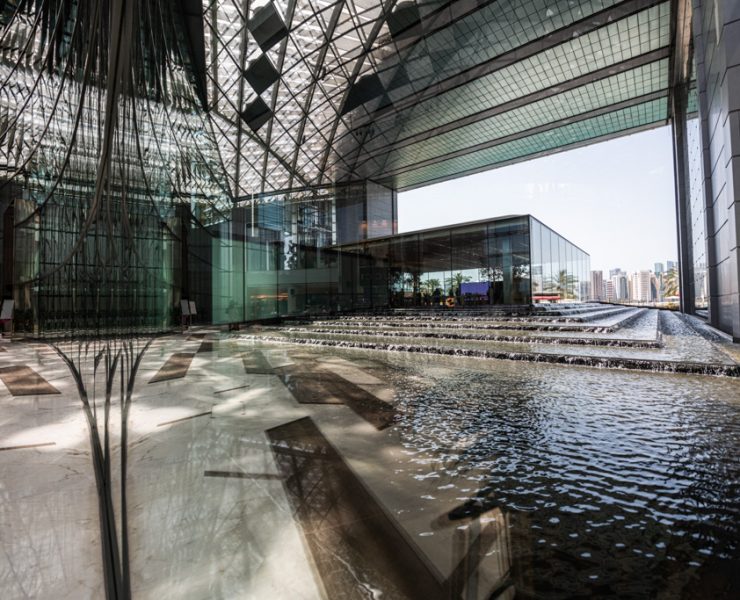Professional Watershaping
In its efforts to provide the industry’s finest education in formats and settings that fit a wide variety of student needs, Watershape University is presenting two outstanding summer programs, one live and in person, the other live and online.
...
The elegant contemporary watershapes at the recently completed Apple Store in Abu Dhabi, UAE, stand among Crystal Fountains’ most sublime recent achievements, one in which they collaborated with an elite project team. Here’s a look at how the highly transparent process unfolded, both literally and figuratively.
...
Air quality in natatoriums, and ultimately the comfort and health of people using and working at those facilities, relies on a careful balance between operating parameters and system design. As Eric Knight explains here, achieving outstanding indoor air requires understanding the interrelated nature of these spaces and the systems designed to maintain optimum conditions.
...
There is no question the bar for visual presentations has been raised dramatically in recent years. 3D modeling programs have transformed the way that watershape and landscape designs are created and sold. That’s why Watershape University is offering a new course aimed at elevating digital presentation skillsets.
...
The labels watershapers use to describe who they are and what they do for a living matter in more ways than one, argues Kevin Woodhurst. Because professional terminology reflects an underlying value system and industry culture, there’s one term in particular that he believes should be permanently retired.
...
While the meaning of “art” has been pondered for millennia, many of those who pursue creating art believe the answer lies in the finest details, and the struggle needed to achieve them. Jimmy Reed argues the installation process itself is the true essence of artistry and the only way to make gemstones from tile and water.
...
Swimming pools and chlorine have been synonymous for more than a century. Even today as alternative sanitizers and technologies designed to reduce, or some say eliminate, the use of chlorine, gain market share, products based on this most familiar element remain the workhorse of recreational water treatment.
...
The most beautiful bodies of man-made water aren’t worth much without the people who maintain them. The profound importance, and enduring nature, of the traditional independent pool service industry was on Eric Herman’s mind as he attended this year’s, forty fifth edition of the Western Pool & Spa Show.
...
Watershape University supports industry professionals across a spectrum of informational needs and topics. As the busy season approaches, with companies expanding their staff, WU online, on-demand programs are at the ready to ensure your staff is prepared to perform at the highest possible level.
...






















Safety is Tough to Talk About